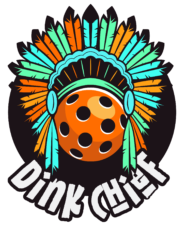Pickleball, a sport combining elements of tennis, badminton, and table tennis, has surged in popularity due to its accessibility and fun gameplay.Pickleball, a racquet sport that combines elements of tennis, badminton, and table tennis, has surged in popularity in recent years due to its accessibility and fun gameplay. The game is easy to learn, but can be challenging to master, making it a great option for people of all ages and skill levels. Pickleball is also a relatively inexpensive sport to play, as all you need is a paddle, a ball, and a court. One of the reasons for pickleball’s popularity is its accessibility. The game is played on a smaller court than tennis, and the rules are simpler. This makes it easier for beginners to get started, and it also means that pickleball can be played in a variety of settings, from parks to backyards. Another reason for pickleball’s popularity is its fun gameplay. The game is fast-paced and competitive, but it is also social and interactive. Players must work together to keep the ball in play, and there is a lot of opportunity for laughter and camaraderie. Pickleball is a great option for people of all ages and skill levels. It is a fun and social sport that is easy to learn and can be played in a variety of settings. If you are looking for a new sport to try, give pickleball a shot! Perfect for all ages and skill levels, it offers a blend of strategy, skill, and social interaction. This article aims to provide beginners with essential tips and strategies to confidently step onto the pickleball court. 1. Mastering the Serve: The serve is one of the most important shots in pickleball, as it sets the tone for each rally. In pickleball, only one serve attempt is allowed, making precision crucial. Beginners should focus on consistently serving deep, targeting the opponent’s backhand side, as most players have stronger forehands. A deep serve pushes opponents back, making their return more challenging. There are a few different ways to serve deep in pickleball. One common method is to use a continental grip and hit the ball with a flat trajectory. Another method is to use an eastern grip and hit the ball with a slight topspin. The best way to determine which serve is right for you is to experiment with different grips and techniques until you find one that you are comfortable with and that produces consistent results. In addition to serving deep, beginners should also focus on targeting the opponent’s backhand side. This is because most players have stronger forehands, and hitting the ball to their backhand side will make it more difficult for them to return the serve. If you are able to consistently serve deep and target the opponent’s backhand side, you will be well on your way to becoming a successful pickleball player. 2. Strategic Return of Serve: After the serve, the return of serve is critical. Aim for a deep return to the opponent’s side, close to the baseline. This makes it harder for the opponent to execute a powerful third shot, giving you and your partner more time to react. However, ensure the return doesn’t go out of bounds, as this hands an easy point to the opponents.After the serve, the return of serve is critical. Aim for a deep return to the opponent’s side, close to the baseline. This makes it harder for the opponent to execute a powerful third shot, giving you and your partner more time to react. It also forces the opponent to hit the ball from a more difficult position, which can lead to errors. However, it is important to ensure that the return does not go out of bounds, as this hands an easy point to the opponents. If you are unsure of your ability to make a deep return, it is better to play it safe and hit a shorter return that is closer to the net. This will give you more time to react to the opponent’s next shot and will also make it more difficult for them to hit a winner. In addition to aiming for a deep return, you should also try to place the ball in a difficult spot for the opponent to reach. This can be done by hitting the ball to the opponent’s backhand or hitting it cross-court. If you can place the ball in a difficult spot, it will force the opponent to make a difficult shot, which can lead to an error. Finally, it is important to be aware of your opponent’s strengths and weaknesses when returning serve. If your opponent is a strong server, you may want to play it safe and hit a shorter return that is closer to the net. If your opponent is a weak server, you may want to take more risks and try to hit a deep return that is close to the baseline. 3. Movement and Positioning: Effective movement is a cornerstone of pickleball strategy. Move your feet and bend your knees to position yourself optimally. This helps in executing low shots and engaging powerful leg muscles for better shot execution. Effective movement is a cornerstone of pickleball strategy. Moving your feet and bending your knees allows you to position yourself optimally for shots. This is especially important for low shots, as it allows you to get under the ball and generate power. Additionally, bending your knees engages your powerful leg muscles, which helps you to execute shots more effectively. Here are some tips for effective movement in pickleball: 4. Focused Shot Execution: Always watch the pickleball hit your paddle. This may seem like a basic tip, but it’s one that is often overlooked. By focusing on the ball, you can minimize errors, maintain a compact swing, and position yourself for the next shot. So, next time you’re playing pickleball, remember to watch the ball! It’s a simple tip that can make a big difference in your




